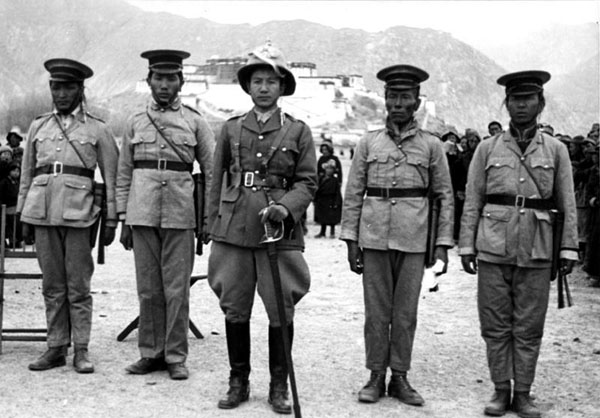
Two retreats: 1920 and 1939
The aim of the Battle of the Bzura in 1939 was to force the Germans to stop pursuing the armies "Prussia", "Lublin", "Krakow" and "Carpathians", retreating to eastern Poland. This battle was of exceptional importance, since the Poles took the initiative and were the attacking side.
When assessing the retreat committed in 1939 by the Polish Army, we most often rely on the experience of the Second World War and condemn almost all decisions taken by the Poles on their basis. We do not notice that there were no such experiences in 1939 - but there was the experience of the 1920 campaign. At present, the war of 1920 in the minds of most Poles consists of the capture of Kiev, the miracle on the Vistula and the "Polish Thermopylae" - the battle of Zadvozh. The memory of a well-conducted two-month retreat in Ukraine has been erased.
Retreat - a military action, which consists in the withdrawal of troops from an uncomfortable strategic or operational position. It must be done in an organized manner. Some tactical alliances carry out deterrent actions, others make a march deep into their own territory, where they regroup for further actions.
Retreat is the least honorable of combat operations. This can be seen even in the provisions on awards and orders. At one time, Virtuti Militari of the highest grades could be obtained either for winning a battle or for effective defense. The prizes were not expected to be effectively withdrawn. Also a reluctantly studied issue - in any chosen charter, encyclopedia or dictionary, the definitions of attack and defense are many times wider than the definitions of retreat. Finally, and perhaps most importantly, retreat is very rarely the subject of war games, maneuvers, or training grounds. No wonder: practical retreats have a detrimental effect on the military spirit.
The most famous is the retreat of Napoleon's Great Army from Moscow in 1812. The biggest, however, happened a century later: in the summer of 1915, the Russians withdrew from the Kingdom of Poland, retreating almost 500 km to the east, losing about a million soldiers and nearly 10 artillery pieces. There was no greater retreat in the next world war. It is also worth mentioning the retreat of the UN troops during the Korean War (from the border with China to the very south of Seoul) and most recently the "mother of all retreats" when Iraqi troops retreated from Kuwait in 000. These few examples are indicative of the effectiveness of a retreat: as a rule, a retreat is a chance to save troops and achieve a slightly better position in peace negotiations, sometimes it leads to a final defeat, and sometimes it allows you to reorganize forces and morale and take up an effective defense or even go to offensive.
In the days of modern armies, the Polish Army carried out several retreats of strategic importance. The first took place in 1792 during the war with Russia. Polish troops withdrew from Ukraine and Lithuania, including battles near Dubenka and Zelenets. There was no general battle near Warsaw - the king chose surrender. In 1809 - during the war with Austria - the Polish Army surrendered the entire southern part of the state together with Warsaw, but was able to go on the offensive and, moreover, restore their losses. Both of these retreats were commanded by General Józef Poniatowski. In the next Polish-Russian war, in 1831, the retreats were not so large-scale and effective: the Polish Army was forced to leave the country, and the capital surrendered.
Finally, in the 1920s, the Poles made two major retreats. The one in 1792 was very similar to the one in 1792: the war was fought with the same enemy, in the same territory, and the result was the same. Both in 1920 and in 1939, the Polish Army avoided a split by concentrating near Warsaw, with the only difference being that it was decided to wage a major battle. Finally, the last strategic retreat of the Poles took place in September XNUMX, it was commanded by Marshal Eduard Smigly-Rydz, the same one who carried out the evacuation of Ukraine nineteen years ago.
Ukraine in May 1920
In the second half of May 1920, the situation on the Eastern Front worsened significantly. Bad news came from both theaters of operations, separated by the Pinsk mud. From the Lithuanian-Belarusian front came news of a huge concentration of Russian forces preparing for a massive offensive. In Warsaw, it was decided to send all possible reinforcements there - also from the Ukrainian front. Ukraine had to be defended with modest forces: a few Polish formations and formations of the Ukrainian army. Unfortunately, the people of Ukraine were so tired of the Sixth Year War that they were not going to fight for an independent Ukrainian state, they were not going to support the government of Semyon Petlyura, they were not going to join the army. It was actually worse news than the news from Belarus, as it meant the failure of political plans.
The Russian offensive in Ukraine began on May 26, 1920. Its main goal was to destroy the 3rd Army of General Eduard Smigly-Rydz, stationed around Kyiv. The 6th Army, stationed south of Kyiv, was initially only to be driven back by the forces of the XNUMXth Russian Army, and then destroyed. The position of the Polish Army in Ukraine was complicated by the fact that Jozef Pilsudski decided to send three divisions back to Belarus. As it turned out later, the situation in Belarus stabilized even without them.
Russian troops in Ukraine - the Southwestern Front - were commanded by Alexander Yegorov, and Joseph Stalin was his commissar. Four groups were sent against the 3rd Polish Army. The main forces of the XII Army under the command of Sergei Mezheninov were to attack Kyiv in the forehead in order to pin down the Polish forces and prevent them from retreating. The task force of Alexander Golikov was supposed to surround Kyiv from the north, and the group of Ion Dzhakir from the south. Even further south, the Cavalry Army under the command of Semyon Budyonny was supposed to catch up with the Russian infantry divisions and stop any attempts to help.
At that time, the 3rd Polish Army had very few forces. The 7th Cavalry Brigade - consisting of two regiments instead of three - guarded Kyiv from the north. On the eastern outskirts of the Ukrainian capital, a group of Colonel V. Jozef Rybak, the core of which was the Podhale brigade. South of the city was the inexperienced 7th Infantry Division under the command of General Karol Schubert. In turn, the highly experienced 1st Legionary Infantry Division was the army's mobile reserve. Its formal commander was Eduard Smigly-Rydz. In the summer of 1920, they were actually commanded - as far as possible - by Colonels Juliusz Romml or Stefan Domb-Bernatsky. Finally, the 6th Ukrainian Division formed the Kyiv garrison, a small formation that could only perform police functions. Finally, it is worth adding that the chief of staff of the army was Security Major Tadeusz Kut, and the operational officer was Capt. Vladislav Bortnovsky (soon received two degrees). Smigly, Kutyshne, Rommel, Domb-Bernatsky, Rybak, Bortnovsky - none of the Polish armies of that time had such outstanding officers.
